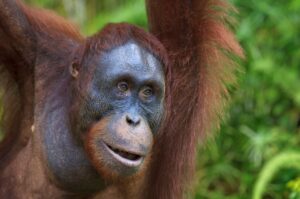Wild yaks are one of the few mammals that thrive at high altitudes but are a vulnerable species. Less than 10,000 individuals remain. They live in China (in northern Tibet and western Qinghai) and in Ladakh, India.
But across the Tibetan Plateau and highlands of Asia, domesticated yaks are very common. Yaks are important livestock that can withstand low oxygen and extreme cold.
Though we still call them yaks, the domesticated bovines are cow-yak hybrids. People keep them for milk, meat, and hair. A recent study suggests that humans domesticated yaks at least 2,500 years ago. This is far earlier than scientists thought.

Domestic yak. Photo: Shutterstock
The Bangga settlement
A research team started its investigations at Bangga, one of the earliest farming settlements on the Tibetan Plateau. Scientists have excavated the bones of long-dead animals here for decades. From DNA sequencing and radiocarbon measurements of bovine remains, they pieced together the history of the yak.
From thousands of bone samples in the Bos genus, they selected the five best-preserved ones and then sequenced them for their genetic ancestry. One of the animals was a male yak and four were female taurine cattle.
Analysis of the male yak showed that it was not wild, but rather a domestic hybrid of yaks and taurine cattle.

A wild yak in Ladakh. Photo: Shutterstock
Intentional genetic engineering?
This helps show how humans survived on the harsh Tibetan Plateau. Wild yaks already existed there, but migrating humans brought taurine cattle with them from western Asia.
These early human communities likely cross-bred cattle and yaks for farming and resources. The yaks could withstand the harsh winters and high altitudes. The cows provided more meat and milk. Combining them produced the best of both worlds. Their manure was also a fuel source and fertilizer.
“Bangga provided us with a unique window into life at high elevations 2,000 to 3,000 years ago,” explained Xinyi Liu, one of the study authors.






